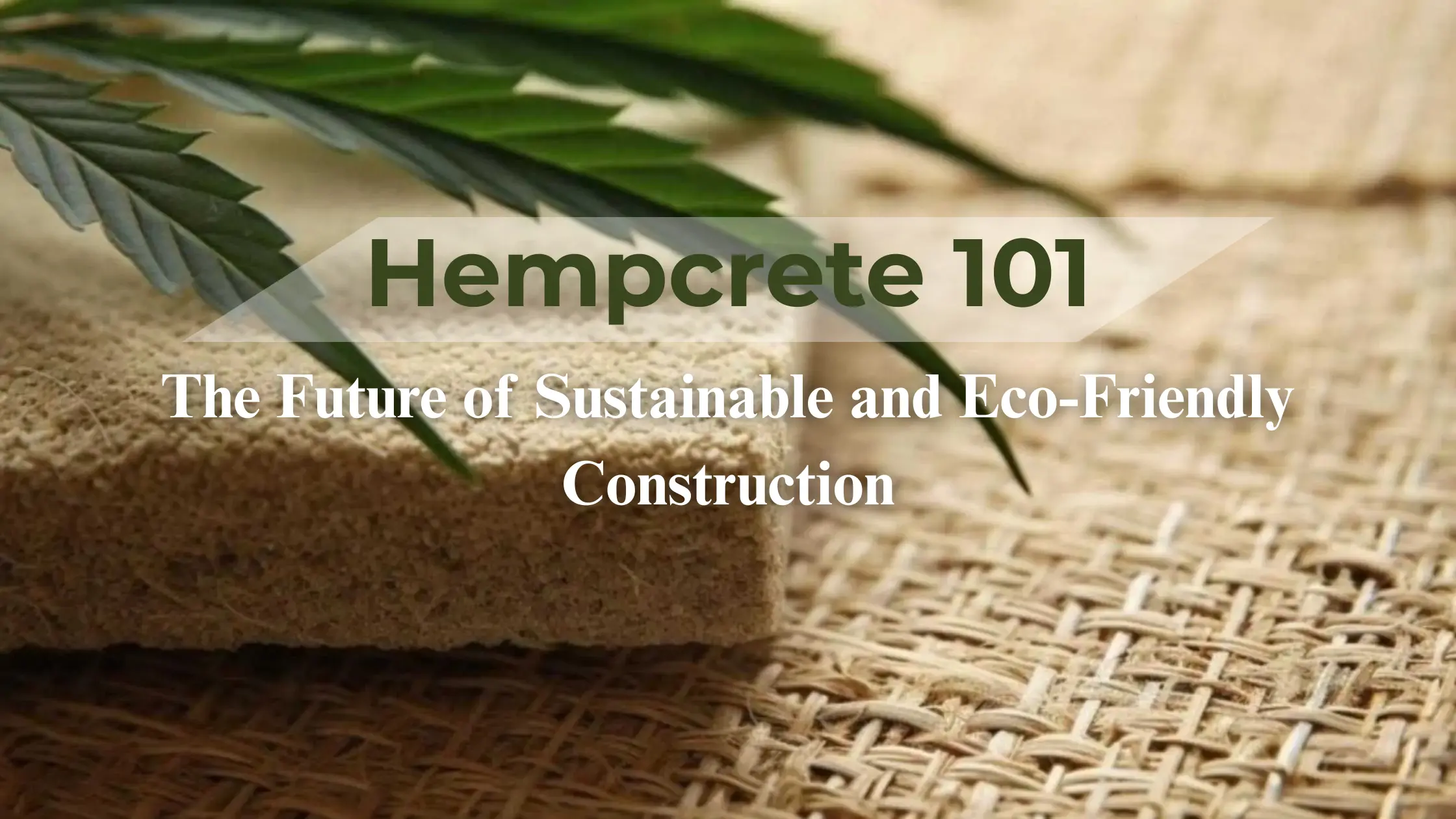When you hear the word “hemp,” the first thing that might pop into your mind is its historical association with textiles or perhaps its misunderstood link to recreational cannabis. But let’s clear that up right away: hemp is a versatile, non-intoxicating variety of the Cannabis sativa plant, and its uses go far beyond just making ropes or clothing. Today, hemp is emerging as a game-changer in the construction industry, potentially reshaping how we build our homes and cities—sustainably and efficiently. And Times of Hemp is here again to explore everything about hemp in the construction industry. So, let’s start!
Why Hemp in Construction?
The impact of the construction sector on the environment has drawn attention in recent years. Concrete, steel, and plastic are examples of traditional building materials that are not only resource-intensive but also major sources of carbon emissions. Here’s where hemp comes in, providing an eco-friendly substitute that is both real and metaphorical.
However, you may question how a small plant can have such a significant impact. Let’s dissect it.
Hemp’s Superpowers as a Building Material
Using hemp, particularly in hempcrete, gives sustainable building a completely new meaning. Water, lime, and the woody core of the hemp plant—known as hurds—combine to form hempcrete. The outcome? A lightweight, airy, natural building material with several significant benefits:
- Carbon-Negative: Hempcrete is one of the few building materials that can truly aid in the fight against climate change. Large volumes of CO₂ are absorbed by hemp plants as they grow. Hemp can absorb up to 15 tons of CO₂ per hectare, which is more than most forests can! Additionally, hempcrete production requires a lot less energy than conventional concrete.
- Breathability and Insulation: Picture a structure that can naturally control humidity and temperature without the use of artificial heating or cooling. Because of its superior insulating qualities, hempcrete keeps your house cool in the summer and warm in the winter. Additionally, it is permeable due to its porous structure, which lowers the possibility of mold growth and enhances indoor air quality.
- Durability and Fire Resistance: You might be shocked to hear that hempcrete has exceptional fire resistance and durability. Hempcrete becomes stronger with age, in contrast to conventional building materials that deteriorate over time. It is a safer alternative for houses because it doesn’t emit harmful fumes like plastics or burn like wood.
- Flexible and Lightweight: Because hempcrete is lighter than conventional concrete, it doesn’t require as many substantial structural supports. This can result in shipping and construction cost savings, particularly for prefabricated homes.
- Sustainably Grown and Harvested: Compared to other crops, hemp needs fewer fertilizers and pesticides and matures in approximately four months. It is a regenerative choice for farmers because it also enhances soil health.
Current Uses of Hemp in Construction
The use of hemp in construction is not a novel concept, despite its futuristic sound. It actually has roots in antiquity, when hemp fibers were utilized in construction projects by societies such as the Romans. However, the pressing demand for sustainable solutions is what is driving hemp’s modern comeback in the building industry.
- France: Nowadays, hempcrete is used all around the world, but mostly in North America and Europe. For instance, throughout the past few decades, France has been at the forefront of the hempcrete movement, producing a large number of homes and structures.
- Canada: Hemp is becoming popular in Canada, particularly in colder climates where its insulating qualities are highly prized.
- U.S: To develop greener, more energy-efficient homes, eco-aware architects and builders are experimenting with hempcrete in the United States.
Challenges in Scaling Up Hemp Construction
“If hemp is so great, why isn’t it used everywhere?” is what you may be asking yourself now. Before hemp can completely transform the building sector, a few obstacles must be removed:
- Regulatory Obstacles: Despite the legalization of hemp in many nations, laws governing its production, usage, and processing are still complicated and differ greatly. These limitations may hinder widespread acceptance and impede innovation.
- Absence of Knowledge and Experience: Since hemp construction is still a relatively new industry, not all builders know how to use hempcrete efficiently. Businesses may be discouraged from investing in hemp-based materials due to this lack of knowledge.
- Higher Initial Costs: The initial cost of hemp-based construction may be higher than that of conventional materials, even though hempcrete might save money over time because of its durability and energy efficiency. This is caused in part by the restricted supply of hemp and the specific expertise needed.
- Scaling Production: We must increase the production of hemp if we want it to become a common building material. This entails investing in processing facilities that can turn raw hemp into useful building materials in addition to increasing hemp cultivation.
The Future of Hemp in Green Building
Hemp in the building appears to have a very bright future despite these obstacles. The building sector is about to change global pressure to adopt more sustainable methods and lower carbon footprints. Here are some noteworthy trends to keep an eye on:
Prefabricated Homes Made of Hemp
Imagine entering a prefabricated, environmentally friendly house constructed completely of hemp. Hempcrete is already being investigated by businesses for use in modular construction and prefabricated panels, which might completely transform the housing sector. In addition to being sustainable, these dwellings are also quicker and simpler to put together.
Hemp Insulation
Hemp is used in construction for purposes other than hempcrete, such as hemp insulation. A natural, non-toxic insulation material that can compete with foam and fiberglass in terms of thermal performance can be made from hemp fibers.
Urban Green Spaces
Hemp has applications beyond insulation and walls. Its potential for developing vertical gardens, green roofs, and other urban green areas that lessen the heat island effect in cities is being investigated by architects.
D Printing with Hemp
Whole structures could be printed with hemp-based materials as 3D printing technology develops. This might speed up and improve the sustainability of construction while also reducing waste.
How You Can Support the Hemp Revolution
What can you do, then, to encourage hemp’s expansion in the building industry? Here are some suggestions:
- Select Eco-Friendly Construction Materials: Look for environmentally friendly solutions like hempcrete whether you’re building a new home or remodeling your existing one. Every decision matters!
- Hemp Support Policies: Urge legislators and local governments to enact laws that facilitate the production and use of hemp. Every level of support is necessary for sustainable building.
- Spread the Word: Power comes from knowledge. The demand for items made from hemp will increase as more people become aware of its advantages. Tell your friends and family about this blog!
Conclusion: Building a Greener World with Hemp
We need to reconsider how we develop in a world where climate catastrophe is a major concern. Hemp is a workable, affordable, and sustainable option that can make our homes and cities greener and healthier places. Even though there are still obstacles to overcome, the increasing interest in hemp construction is encouraging since it shows that change is not only feasible but is happening.
The future of construction is about building more sustainably and intelligently, not just bigger or quicker. Hemp is helping to create a more sustainable and optimistic future. Thus, consider hemp the next time you’re considering developing. It could be the secret to creating a more environmentally friendly future for everybody. 🌱🏡🌍
To read more about the sustainability of hemp and its contribution to the greener world, please get into our other blog by clicking the link below:





